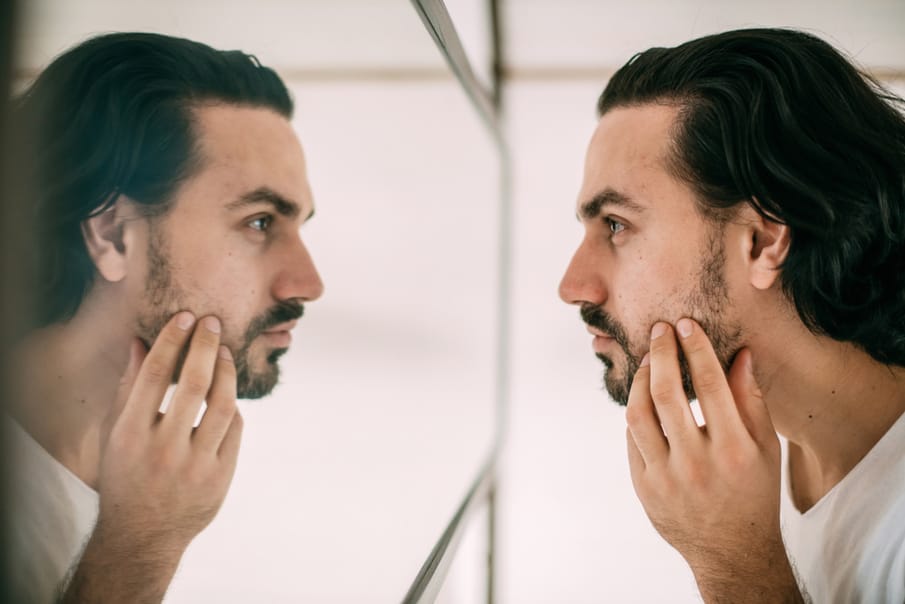What’s the truth about this potentially devastating condition?
Body dysmorphic disorder (BDD) is a condition that is characterised by a preoccupation with the way that someone sees themselves and their flaws. According to mental health charity Mind, this may include believing that you are:
- Out of proportion, such as being too big or too small
- Disfigured or the wrong shape
- Lacking symmetry
- The wrong colour or texture
BDD can have a devastating effect on the individual, but it’s also a condition that’s shrouded in misconceptions and stigma – which only add to the mental load. Here, we’re breaking down five common myths about BDD.
Myth one: BDD is a rare condition
While estimations on how many people are affected by BDD vary, most land around 2% of the population. While that may sound like a relatively small percentage, that equates to 1.3 million people in the UK – the same number of people who are estimated to have bipolar.
With BDD impacting one in 50 people, if you don’t know someone who is personally affected, it’s likely that you know someone else who does. And, so, taking the time to understand the condition is a worthwhile endeavour.
Myth two: It only affects teenage girls and young women
While BDD usually begins in late adolescence (between 16 and 18 years old), it can continue into adulthood and affects people of any race and ethnicity and all socioeconomic classes.
Although BDD affects slightly more women than men, the difference is fairly small – commonly thought that, of all those with BDD, 40% are men and 60% are women.
Muscle dysmorphia is a form of BDD that centres around the feeling that you are not muscular enough, and leads to anxiety around attending the gym and growing muscle. Though research into this particular area is in its infancy, it is thought that this particular form of BDD is more likely to affect men – with the Body Dysmorphic Disorder Foundation estimating that around 10% of men who regularly go to the gym may experience this disorder.
Myth three: BDD is about vanity
BDD can be a debilitating condition. While more research is needed to understand why BDD happens, it is associated with bullying, and childhood abuse and trauma – with the BDD Foundation sharing that, each year, one in 330 people diagnosed with BDD commit suicide.
Individuals may feel as though they are defined by their perceived flaw, and can develop compulsions around it, such as repeatedly checking how bad their flaw is. Others may avoid social situations or turn to needless treatments in an attempt to rectify the flaws they see.
Among many complex and difficult emotions, those with BDD may also experience anxiety, depression, shame, and fear.
Myth four: BDD is a type of eating disorder
While there are some overlaps between BDD and eating disorders – including having poor body image, anxiety and worry around physical appearance and developing compulsive behaviours as a result of trying to deal with these worries – BDD and eating disorders are not the same.
Some people with BDD may have concerns about their weight, which could lead to an eating disorder, but someone with BDD may experience intrusive thoughts about any area of the face or body, including the skin, hair, nose, chin, teeth, lips, breasts, and genitals.
As a result of this, the compulsive behaviours around BDD can take many different forms, but can include seeking reassurance, body checking, skin picking, using tanning or skin-lightening products, compassion, and seeking cosmetic surgery.
Myth five: It’s easy to tell if someone has BDD
According to the International OCD Foundation, multiple studies have found that the majority of people with BDD do not have a diagnosis on their medical records. What’s more, studies have also seen that cosmetic surgeons often do not recognise BDD in patients who are seeking cosmetic treatment.
In a study published in the Journal General Hospital Psychiatry, people who were hospitalised in a psychiatric inpatient unit were asked why they hadn’t told their clinician about their BDD symptoms. The most common reason they have was that they felt too embarrassed and feared being judged.
While discussion and awareness of the condition is growing, it is vital that we continue to talk and explore the condition and the impact that it is currently having on the lives of many people.
To learn more about BPP, visit bddfoundation.org


Comments